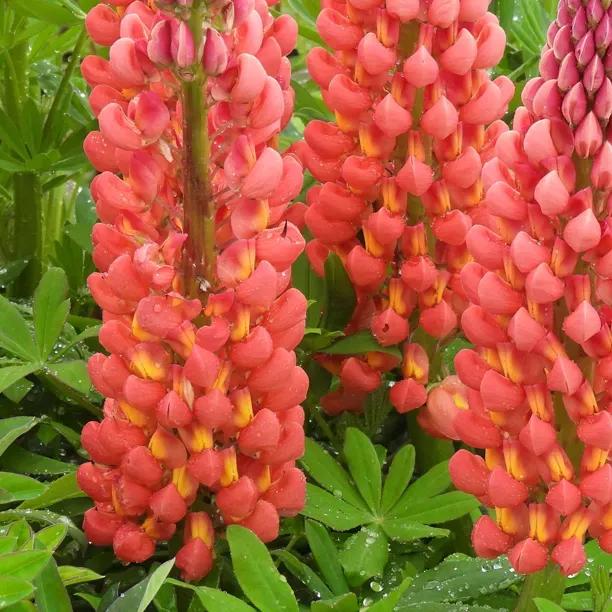Terracotta Lupin Plants
The details
Lupinus, West Country Range
Pot Grown Herbaceous Perennials- Colour: Bright peach
- Flowering: June - July
- Mounds of mid-green foliage
- Cutting: Yes
- Height: 90cm
- Spread: 75cm
Recommended extras
Description
'Terracotta' Lupin Plants, Westcountry Range. 2 Litre Pots
Orange-apricot flowers tinged with gold from June to July: seriously popular with florists!
The colour of these lupins conjures up clay-tiled roofs and baking Mediterranean summers, whatever the weather. They make a popular backdrop in borders and are as upright as the soldiers from the famous Terracotta Army, with a lovely light scent.
Browse our other lupin varieties or all our perennial plants.
Features
- Colour: Terracotta or apricot peach
- Flowering: June - July
- Mounds of mid-green foliage
- Cutting: Yes
- Height: 90cm
- Spread: 75cm
- Position: Full sun or partial shade
- Soil: Moist but well-drained, acid to neutral soil
- Planting instructions are supplied
Wild lupin seeds were eaten in the past, but this is no longer possible with modern varieties, so please do not eat any part of them.
Growing Terracotta Lupins
Being of the pea family, lupins are nitrogen fixers and will perform well enough in poor soil, but for a good display they like plenty of organic matter and consistent moisture during the growing season. The ideal soil pH is neutral to mildly acidic, but as long as you aren't growing on a thin topsoil over shallow chalk they should be fine anywhere with fairly decent drainage: damp is fine, but their crowns tend to rot if waterlogged in winter. They are shade-tolerant and suitable for north-facing sites, although the flowers will be a bit less impressive.
In Your Garden Design
Whether dotted singly around a nostalgic cottage garden, or in massed, formal ranks, modern lupins add plenty of oomph to the border, introducing height, bold colour, and earthy scents.
Terracotta works well with apricots, pale yellows and creams, such as Geums, Hemerocallis and White Digitalis.
Did You Know?
Terra cotta means 'baked earth' in Italian, and is notably less tasty than panna cotta. The first Qin Dynasty Emperor, Shi Huangdi, had an army of invincible terracotta warriors that he (allegedly) used to unite the Chinese kingdoms into one empire in 210 BC. The remains of the army are on display at his mausoleum in Shaanxi Province; scientists remain clueless about how to reanimate them, and some are so badly demoralised by their failure that they have gone so far as to suggest that it is impossible.
Cultivation Instructions
Lupins should be planted in a sunny or semi-shaded spot, preferably in moist but well-drained soil as they dislike anything that stays really wet in winter. Water regularly until well established, and water mature plants during dry periods to avoid mildew.
Aphids love lupins, and slugs and snails can do a lot of damage to young plants and new spring growth, so be ready to sluggo them on sight. You can rub off aphids by hand or spray them off with a jet of water, or bug spray them. It is best to entirely remove a badly affected flower stem as soon as you see it, rather than try to save it.
Aphids will dictate the best time to tidy your plants each year. If you have no problem with them, you can leave the leaves and stems for winter interest, and chop them back in early spring to make way for new growth. If aphids are causing problems, then chopping your plants down to the ground in September will also get rid of their eggs, depriving them of a running start next year.
Feed with a general-purpose fertiliser in spring, or some bonemeal or seaweed. Feed them occasionally during the growing season.
Remove faded flower stems as soon as they fade to encourage a new flush of flowers in early autumn. Staking is only necessary in very windy locations: do this in spring, before the flower spikes appear.
Propagation works best from basal cuttings; the seeds will vary from the parent.


